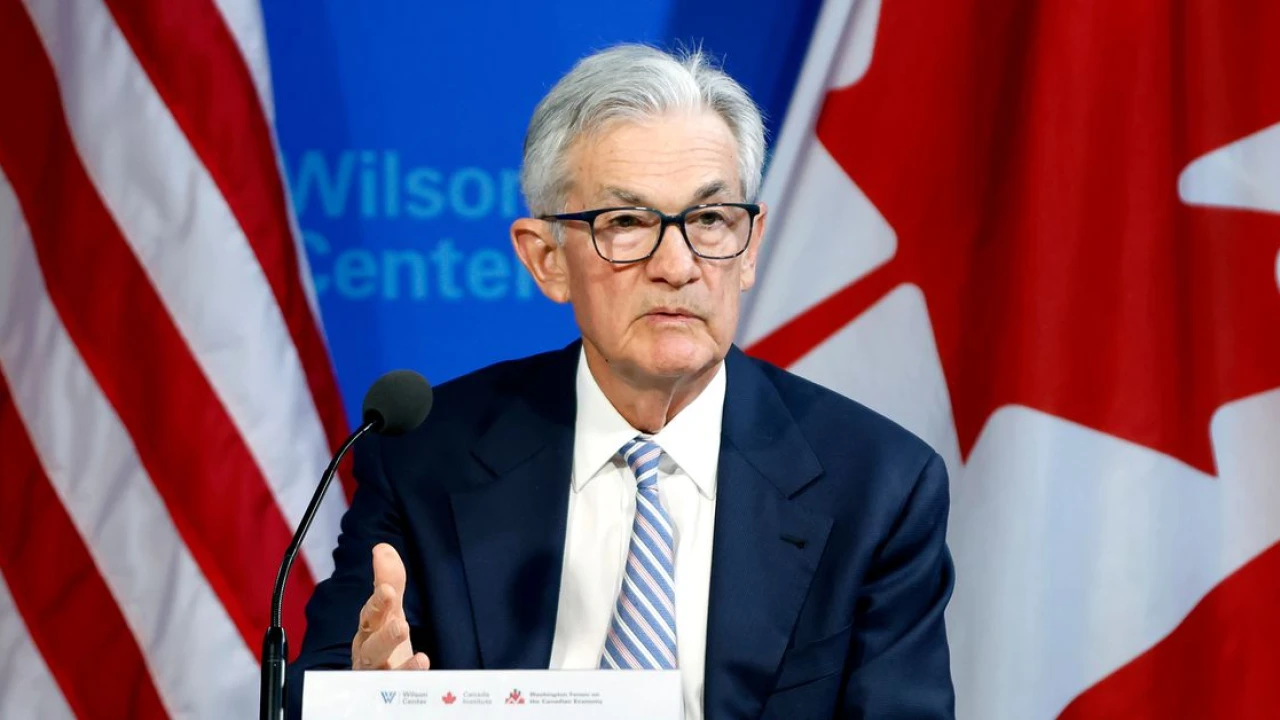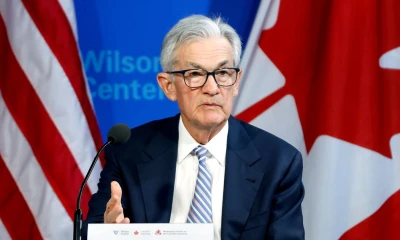Business
Oil sets at steepest weekly loss in three months
Brent crude futures for July settled 71 cents lower, or 0.85%, to $82.96 a barrel

New York: Oil prices settled lower on Friday, and posted their steepest weekly loss in three months as investors weighed weak US jobs data and possible timing of a Federal Reserve interest rate cut.
Brent crude futures for July settled 71 cents lower, or 0.85%, to $82.96 a barrel. US West Texas Intermediate crude for June fell 84 cents, or 1.06%, to $78.11 a barrel.
Investors were concerned that higher-for-longer borrowing costs would curb economic growth in the US, the world's leading oil consumer, after the Federal Reserve decided this week to hold interest rates steady.
For the week, Brent declined more than 7%, while WTI fell 6.8%.
US job growth slowed more than expected in April and the annual wage gain cooled, data showed on Friday, prompting traders to raise bets that the US central bank will deliver its first interest rate cut this year in September.
The Fed held rates steady this week and flagged high inflation readings that could delay rate cuts. Higher rates typically weigh on the economy and can reduce oil demand.
The market is repricing the expected timing of possible rate cuts after the release of softer-than-expected monthly jobs data, said Giovanni Staunovo, an analyst at UBS.
US energy companies this week cut the number of oil and natural gas rigs operating for a second week in a row, to the lowest since January 2022.
The oil and gas rig count, an early indicator of future output, fell by eight to 605 in the week to May 3, in the biggest weekly decline since September 2023. The number of oil rigs fell seven to 499 this week, in the biggest weekly drop since November 2023.
Geopolitical risk premiums due to the Israel-Hamas war have faded as the two sides consider a temporary ceasefire and hold talks with international mediators.
Further ahead, the next meeting of OPEC+ oil producers - members of the Organisation of the Petroleum Exporting Countries and allies including Russia - is set for June 1.
Three sources from the OPEC+ group said it could extend its voluntary oil output cuts beyond June if oil demand does not increase.
Money managers cut their net long US crude futures and options positions in the week to April 30, the US Commodity Futures Trading Commission (CFTC) said.
SOURCE: REUTERS
Regional
Why we keep seeing egg prices spike
How corporate greed plays a role in making bird flu outbreaks — and egg prices — worse.

Egg prices are rising again. The culprit, again: bird flu.
At least, that’s the surface-level reason. In the current wave, according to the CDC, the H5N1 bird flu has been found in over 90 million poultry birds across almost every state since 2022, and has even spread to dairy cattle, with over 30 herds in nine states dealing with an outbreak at the time of this writing.
The last time bird flu struck US farms, in early 2022, egg prices more than doubled during the year, reaching a peak of $4.82 for a dozen in January 2023. During the bird flu outbreak in 2014 to 2015, egg prices also briefly soared.
While prices now are still nowhere near the peak they reached in January 2023, they’ve been creeping up again since last August, when a dozen large eggs cost $2.04. As of March, we’re bumping up against the $3 mark, which is a nearly 47 percent increase. It’s also a huge increase from the price we were used to a few years ago: In early 2020, a dozen eggs were just $1.46 on average.
The H5N1 strain of bird flu is highly contagious and obviously poses a big risk to hens. But the fact that bird flu outbreaks keep battering our food system points to a deeper problem: an agriculture industry that has become brittle thanks to intense market concentration.
The egg market is dominated by some major players
The egg industry, like much of the agricultural sector, is commanded by a few heavyweights — the biggest, Cal-Maine Foods, controls 20 percent of the market — that leave little slack in the system to absorb and isolate shocks like disease.
Hundreds of thousands of animals are packed tightly together on a single farm, as my colleague Marina Bolotnikova has explained, where disease can spread like wildfire. According to the government and corporate accountability group Food & Water Watch, three-quarters of the country’s hundreds of millions of egg-laying hens are crammed into just 347 factory farms.
The system also uses genetically similar animals that farms believe will maximize egg production — but that lack of genetic diversity means animal populations are less resistant to disease.
When a hen gets infected, stopping the spread is an ugly, cruel business; since 2022 it has led to the killing of 85 million poultry birds. For the consumer, it often means paying a lot more than usual for a carton of eggs.
Preventing any outbreaks of disease from ever happening isn’t realistic, but the model of modern industrial farming is making outbreaks more disruptive.
And it’s not just these disruptions driving price spikes. Egg producers also appear to be taking advantage of these moments and hiking prices beyond what they’d need to maintain their old profit margins.
“It is absolutely a story of corporate profiteering,” says Rebecca Wolf, senior food policy analyst at Food & Water Watch.
Cal-Maine’s net profit in 2023 was about $758 million — 471 percent higher than the year prior, according to its annual financial report. Most of this fortune was made through hoisting up prices; the number of eggs sold, measured in dozens, rose only 5.9 percent.
Last year, several food conglomerates, including Kraft and General Mills, were awarded almost $18 million in damages in a lawsuit alleging that egg producers Cal-Maine and Rose Acre Farms had constrained the supply of eggs in the mid- to late 2000s, artificially bumping prices. A farmer advocacy group last year called on the FTC to look into whether top egg producers were price gouging consumers.
Are we doomed to semi-regular price surges for eggs?
Our food system didn’t become so consolidated — and fragile — by accident. We got here because of three big reasons, Wolf says: by not enforcing environmental laws, by not enforcing antitrust laws, and by giving away “tons of money” to the agriculture industry.
During the New Deal era, the federal government put in place policies that would help manage food supply and protect both farmers and consumers from sharp deviations in what the former earned and the latter paid. Under Secretary of Agriculture Earl Butz in the 1970s, though, those policies started getting chipped away; Butz’s famous motto was for farmers to “get big or get out.” The spread of giant factory farms is in part a product of this about-face in managing supply.
Because our food system is so concentrated and intermingled, it also means any single supply chain hiccup — whether due to disease, wars, or any other reason — can have ripple effects on others, affecting prices in a vast number of essential consumer goods and services. “When we have things like E. coli outbreaks, it’s hard to know where the problem lies because the way that we process and manufacture is so hyper-industrialized that you then have a problem with millions of pounds of food,” says Wolf.
Thankfully, the Biden administration has been making some strides in loosening up food industry consolidation, often by shoring up enforcement of long-existing antitrust laws. But there’s still more we could do. There are bills that have been introduced to Congress, like Sen. Elizabeth Warren’s Price Gouging Prevention Act, that would give the FTC the authority to first define what counts as price gouging and then crack down on companies that raise prices excessively.
The cycle of food chain snags and higher prices doesn’t have to keep repeating.
“We are maximizing profit truly over everything else — over the welfare of the animals, over the rights and wages of people who work in the food system, for even consumers who are at the grocery store,” Wolf says. “None of this is inevitable — we shouldn’t have to be here.”
This story appeared originally in Today, Explained, Vox’s flagship daily newsletter. Sign up here for future editions.
Regional
High interest rates probably aren’t going away anytime soon
The Federal Reserve will give an announcement on interest rates during its May meeting Wednesday. But inflation is still high, so don’t get your hopes up.

Even borrowing money is more expensive these days — and the Federal Reserve might decide to keep it that way for a while.
All eyes are on the Fed’s May meeting today, where Fed chair Jerome Powell will make an announcement about interest rates. Though analysts do not expect the Fed to cut rates just yet, some had projected a cut might be coming soon. That now appears increasingly unlikely.
Instead, his remarks are expected to shed light on how much longer the US economy will have to endure high interest rates, which are squeezing everyone from prospective home buyers to people who have racked up credit card debt.
High interest rates have helped cool a too-hot economy, significantly bringing down inflation to 3.5 percent from its 9.1 percent peak in June 2022. But it’s still well above the Fed’s target rate of 2 percent, and inflation has increased slightly in the last few months, which means we might not see a rate cut anytime soon.
“The ‘last mile’ ... to the Fed’s target range was expected to be more difficult than what came before it,” said Matt Colyar, an economist at Moody’s Analytics. “Even with that expectation, however, inflation data in the first three months of 2024 has been surprisingly high.”
Why inflation has remained high
A few factors are driving stubborn inflation.
Housing costs have been the biggest contributor by far. Inflation in rent and homeowners’ cost of living in their own homes has moderated somewhat but by less than expected, Colyar said. Auto insurance and repair costs have also risen sharply even though car prices have fallen. And health care costs have also picked up.
:no_upscale()/cdn.vox-cdn.com/uploads/chorus_asset/file/25427523/wCG9h_inflation_has_been_stubborn__3_.png)
But this isn’t necessarily a “strong indication that inflation will remain similarly high for the rest of 2024,” Preston Caldwell, chief US economist at Morningstar, said in a note to investors Friday.
The US economy has so far staved off a recession, growing at a slower but still solid pace in the first quarter of 2024 in part because Americans are continuing to spend a lot. The job market also remains strong, with the US blowing past projections to add 303,000 jobs in March.
That hasn’t given the Fed much urgency to cut rates anytime soon. “It’s not an economy in obvious need of the pick-me-up that a rate cut would deliver,” Colyar said.
Strong consumer spending, though, isn’t expected to last as Americans deplete any savings they accrued in the pandemic and rack up more household debt. That will likely cause US economic growth to slow in the coming year, which “should be sufficient to cool off remaining excess inflation,” Caldwell told Vox.
When will the Fed cut interest rates?
After the Fed’s December meeting, financial analysts were expecting six interest rate cuts in 2024, beginning in June. But given that inflation has remained high and the economy is still going strong, that doesn’t seem to be happening anytime soon.
Caldwell said he’s now expecting three cuts this year starting in September. Other top economists at UBS, Barclays, Goldman Sachs, and Bank of America have also pushed back their projections for a rate cut. For example, Bank of America is projecting only a single rate cut in December.
Some Fed officials also have not ruled out the possibility of another rate hike, which would be the first since last July. Fed Governor Michelle Bowman recently said she would support a rate hike “should progress on inflation stall or even reverse.”
But Caldwell said that still seems a far-off possibility. “The mere fact that they’re delaying rate cuts already has a contractionary effect on the economy,” he said.
Colyar said he will be watching Powell’s remarks to discern “how spooked they have been by the hotter-than-expected inflation data in the first quarter” and to what extent he attributes the stickiness of inflation to a few industries, rather than an indication of current overall cost pressures.
What continued higher interest rates might mean for the economy
Recent economic data has already dampened earlier enthusiasm in the stock market about an imminent interest rate cut. Powell’s remarks might have a similar depressive effect, depending on how pessimistic he is about the Fed winning its battle against inflation in the near term.
“The first effect is psychological,” Colyar said. “Persistently high borrowing costs are painful and will eventually break something.”
It’s already slowing down the real estate market significantly. Mortgage rates have surpassed 7 percent, and that’s keeping prospective home buyers and sellers on the bench. People who secured lower interest rates just a few years ago don’t want to sell and would have to secure a higher-rate mortgage for their new lodging, so there are fewer homes on the market, keeping prices higher than many buyers can afford.
Americans’ total credit card debt also hit a record $1.13 trillion earlier this year, and repaying that in a high interest rate environment is bound to hurt their wallets.
At the same time, the US economy has proved resilient even in a high interest rate environment. The Fed doesn’t need to step in just yet given steady job growth and economic growth, as well as strong consumer spending.
“However, I would argue that the time to start loosening policy is before things are flashing red,” Colyar said. “Waiting too long because shelter prices are slow in moderating I think is an unnecessary risk.”
This story appeared originally in Today, Explained, Vox’s flagship daily newsletter. Sign up here for future editions.
-

 Pakistan 2 days ago
Pakistan 2 days agoPM Shehbaz, Zardari pays tribute on Labour Day
-

 Technology 21 hours ago
Technology 21 hours agoPakistan's first satellite mission departs for historic moon journey
-

 Regional 18 hours ago
Regional 18 hours agoPress Club president killed, nine wounded in Khuzdar bomb blast
-

 Pakistan 2 days ago
Pakistan 2 days agoGovernor KP Ghulam Ali meets Nawaz Sharif
-

 Pakistan 1 day ago
Pakistan 1 day agoPM's Saudi Arabia visit to deliver positive results in few months: Tarar
-

 Pakistan 22 hours ago
Pakistan 22 hours agoWorld Press Freedom Day being observed today
-

 Pakistan 1 day ago
Pakistan 1 day agoGovt releases funds to end current passport backlog
-

 Pakistan 2 days ago
Pakistan 2 days agoIPP gets another shock





















